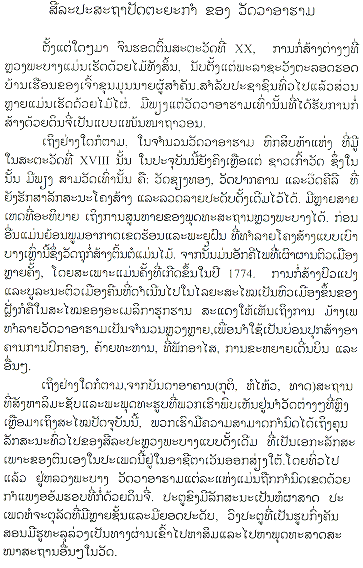Until the beginning of
the XXth century all buildings in Luang Prabang were made of wood. The only exception to
this rule were the temples, which on the whole, were built of bricks and mortar. However,
of the sixty five monasteries accounted for in the XVIIIth century only twenty nine now
remain; of these, only three - Vat Xieng Thong, Vat Pak Khane and Vat Khili - have
retained their original structure and decoration.
Several reasons explain the disappearance of religious
monuments in Luang Prabang. Firstly, the climate with its tropical storms and rains has
ravaged these light and mostly wooden structures. Then, there were the fires which
devastated the town on several occasions, particularly the one during the Laotian New Year
in 1774. Finally, during both the French and American colonial periods, the reconstruction
and restoration of the town was accompanied by the demolition of several temples to make
way for administrative buildings, barracks and housing, and for the expansion of the
airport.
However, from the various buildings (monasteries, chapels,
stupas, temples), the furniture and statuary that are found generally in monasteries up to
the present day, it is possible to define the general features of traditional Luang
Prabang art, unique in its kind in Southeast Asia . Each
monastery in Luang Prabang is demarcated by a peripheral masonry wall. Doors in the form
of prasat - a small, square, tiered and crowned tower, perforated on opposite sides by two
large arched bays connected by a continuous passageway allow access to the sanctuary and
its building annexes.

